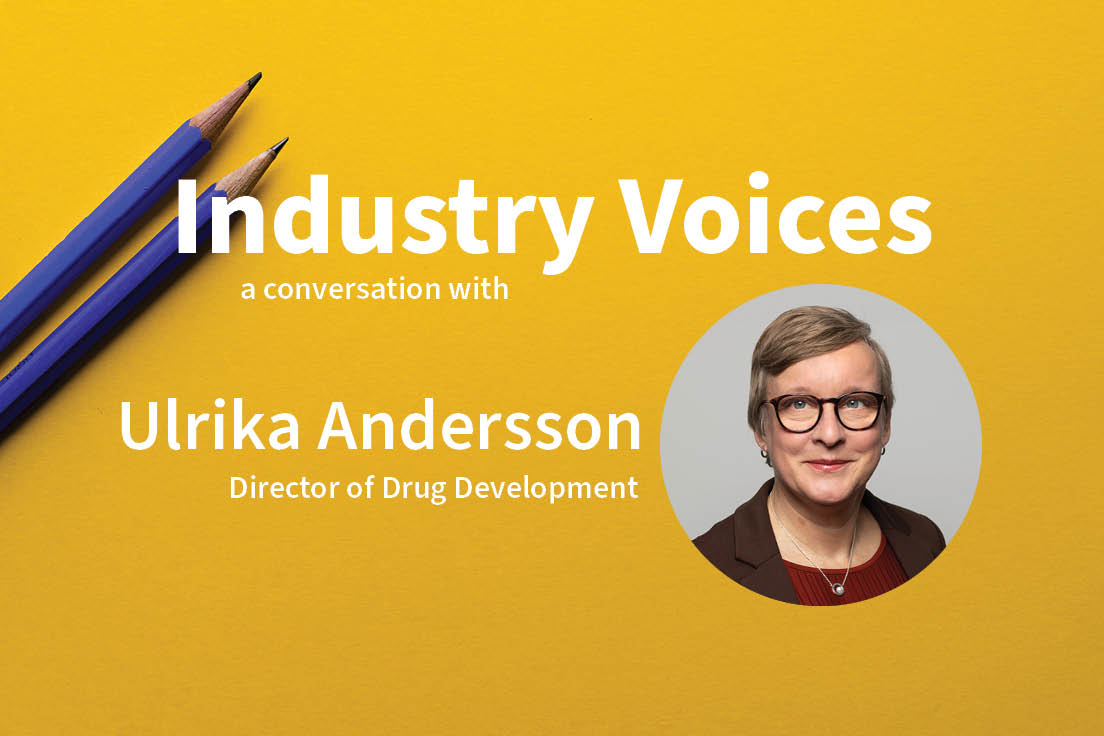Ulrika Andersson on First-in-Human Clinical Trial Development


The first-in-human trial, which aims to show the safety and tolerability of a new drug, is a major milestone for any drug development project. For this edition of the Industry Voices series, Ulrika Andersson, the new Director of Drug Development with the Therapeutics Development Team, discusses the route to the first-in-human clinical trial, planning nonclinical studies, and how to approach regulatory guidelines.
Can you tell us a little bit about your background and your new role as Director of Drug Development with the Therapeutics Development Team?
As pharmaceutical development has been the core of my career, I’m excited to take on this new role. I’m a pharmacist by training and have spent 25+ years in this field. Initially, I developed injectable formulations for in vivo studies of poorly soluble compounds at AstraZeneca. I participated in many R&D projects, focusing on CMC and the developability of candidate drugs, but at the same time interacting with and learning from all the competencies required to run an R&D project. Over the years, I have shifted my focus away from the lab and into project and commercial management, both at AZ and at a large CDMO. Now I have the opportunity to lead a great team of seasoned expert consultants within the fields of pharmaceutical development and CMC, toxicology and safety, nonclinical development, DMPK, and clinical development. The team can make a real difference for sponsors, and they have shown that on numerous occasions.
How has your experience shaped your understanding of the need to see the big picture when it comes to drug development, and why is it important to have that understanding from beginning to end?
The end goal of any drug development project is to make a difference for the patient. All strategic decisions made, and all competencies involved need to have this focus throughout the course of the project. This applies to everything from the choice of preclinical disease model, the design of toxicological studies, the choice of dosage form, the design of clinical studies, and the regulatory strategy. I believe it is vital that the sponsors ensure they get the right support from the right experts at the right time to reach their end goal.

How does this affect the route to the first-in-human clinical trial?
The first-in-human trial is a major milestone for any drug development project. The aim is to show the safety and tolerability of the new drug. All development work up to that point aims to characterize and minimize risks for the subjects participating in the trial. Nonclinical studies should support a safe starting dose in humans and identify safety parameters for clinical trial monitoring. To plan nonclinical studies appropriately, you must understand your drug substance and drug product to identify potential risks. For example, your drug substance and product must always be adequately characterized when it comes to purity, stability, and manufacturing processes. This is to ensure you are evaluating the right impurities and degradation products at relevant levels in the nonclinical studies.
What is meant by “an adequately developed and characterized drug substance”?
Well, for nonclinical studies, the drug substance synthesis process is often performed on a small scale; it is not fully optimized and does not have to be produced according to Good Manufacturing Practice (GMP). But during nonclinical studies, you need to have a scientifically sound potency and stability-indicating analytical method to identify any impurities that may result in unwanted pharmacological effects. The drug substance will be further developed, and the manufacturing scale and process are typically expanded before applying it in drug product formulations intended for testing in human studies.

There are numerous regulatory guidelines covering this area — how should they be approached?
Regulatory guidelines exist for a good reason and can be very helpful, but they can also be overwhelming. The guidelines should not be read as a basic instruction manual that is applied the same way to every project; you need to find a way to apply them to your specific project. If you are to step outside of the guidelines, this should always be verified by the authorities through scientific advice.
It is necessary to start early, to have a clear strategy, and to verify the route you chose based on sound scientific arguments with the authorities. Several of my team members have worked at regulatory bodies and have been involved in authority meetings, enabling us to guide sponsors to ask the relevant questions at the right time of the project.
So, it all ties together: you need an experienced multidisciplinary team to make sure you know what needs to be done and when.
Interested in learning more? Ulrika recently presented “The Road to First-in-Human Trials: Insights from a Real-World Example.” Click below to watch the webinar:
Read more from Perspectives on Enquiry & Evidence:
Sorry no results please clear the filters and try again

How to Ensure Your Adaptive Trial Is Appropriate for Regulatory Submission

Maria Lundberg on a Holistic Approach to Therapeutics Development



